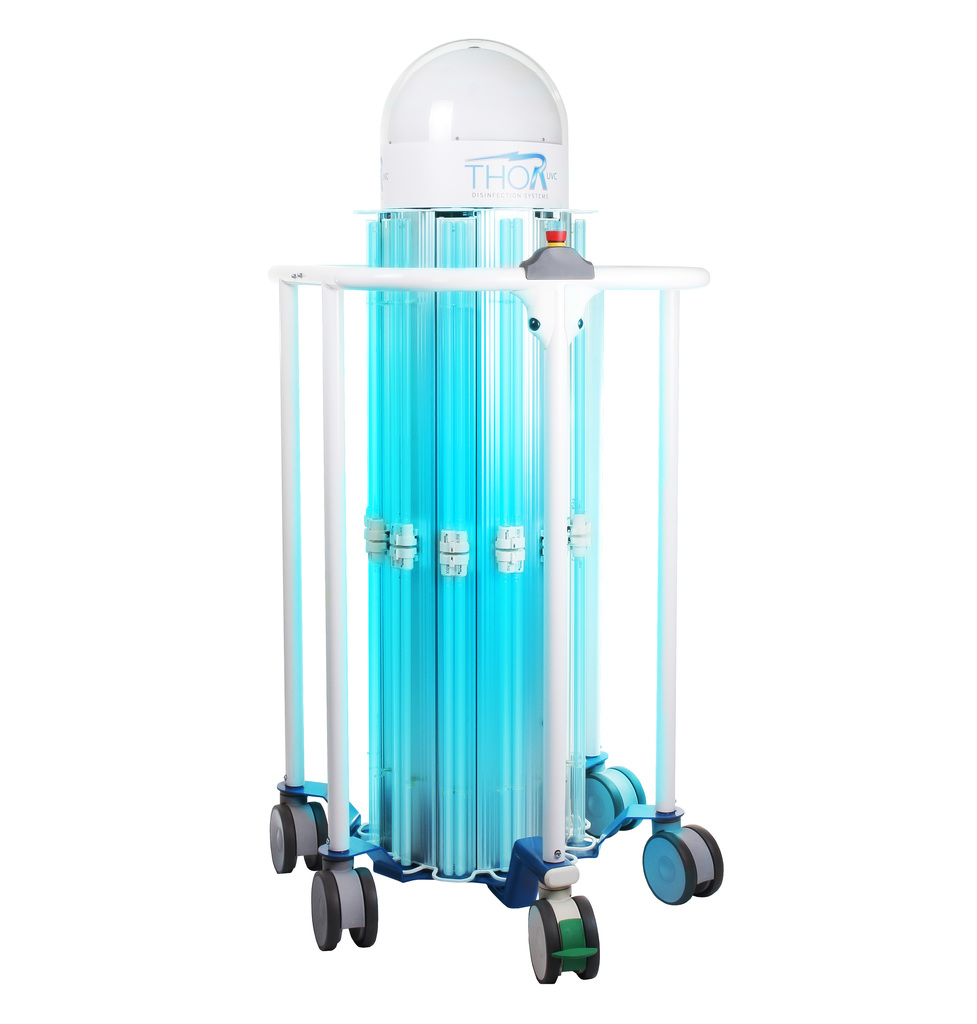

|
Chris Shaw
Editor |
| Home> | HOSPITAL HYGIENE | >General Hospital Hygiene | >Robot hammers superbugs |
Robot hammers superbugs
09 October 2018
With the country’s hospitals struggling in the grip of a superbug crisis that costs the NHS £1 billion per year, a recent study has revealed that a UK-developed UV light robot could spell the end of this catastrophe, saving up to 30,000 lives.

Superbugs have evolved during a ‘post-antibiotic apocalypse' in which bacteria, fungi, viruses and parasites have mutated to become untreatable.
According to Finsen Technologies, cleaning a ward or operating theatre to the extent required to eradicate them has become almost impossible; traditional cleaning techniques kill just 50% of the bugs responsible for the Healthcare-Associated Infections (HAI) which cause 30,000 deaths and cost the NHS a staggering £1 billion each year.
However, a new robot on the block could change all this – the UK-developed and manufactured THOR UVC from Finsen Technologies. The robot uses UV light to kill all known superbugs in just minutes, sensing its surroundings, mapping the room, and even reporting back when the work is complete. A study of the robot’s efficacy concludes that, irrespective of cleaning time, THOR UVC killed more than 99% of the MSSA bacteria exposed to it. This could mean that patients will no longer be at risk of catching an antibiotic-resistant infection while in hospital, and infections outside the hospital environment will reduce as bugs will be unable to spread.
Previous UV-C light technology has used lower levels of light than THOR UVC, resulting in a longer, less efficient, process. The high level of UV-C light produced by second-generation THOR UVC is critical in killing the new strains of superbug. Its reach is higher than its predecessors, obliterating bugs from floor to ceiling while ensuring even those hiding in shadowed areas don't get missed. The robot disinfects a 360-degree area – irrespective of obstacles – and senses clutter and shadows, guaranteeing effective doses in all areas.
THOR UVC has already been introduced into a United Arab Emirates hospital following impressive test results, with installations increasing across Europe, the Middle East and Asia.
Steve Bertuzzi, COO of Finsen Technologies, said: “We’ve been working on new, updated UV-C technology for some time now, knowing that it is an incredibly effective means of killing most bugs. With this knowledge, we have designed something incredible – a new generation robot that generates more UV-C than its predecessors, making it faster, more efficient and less expensive. The THOR UVC destroys almost 100% of bacteria in just minutes of use, and has applications in hospitals and beyond.”
UV-C light is a short-wavelength ultraviolet light, which works by disrupting the bugs’ DNA, rendering them useless. The method uses no chemicals, reaches floor to ceiling, and is suitable for even the smallest of spaces, meaning it can be used in areas such as ambulances. The technology has proven to be a success, eliminating culprits including C. Diff, MRSA, Ebola and Norovirus.
Bob Darby, director of infection prevention & control at Circle Health who run hospitals, rehabilitation and NHS health services across the UK, added: “With the challenges of controlling the rise of increasingly resistant microorganisms facing healthcare today, the need to reduce the bio-burden in the clinical environment and particularly so in high-risk areas such as operating theatres; in support of the other infection prevention and control practices; has never been higher.
As part of the IPC strategy Circle Health evaluated THOR UVC performance in operating theatres and other clinical environments and we were extremely impressed with the results achieved. In my opinion, the use of UV-C can be a valuable aid in this as it can; when used correctly reduce bio-burden in difficult to contact areas and will not lead to increased resistance."





















